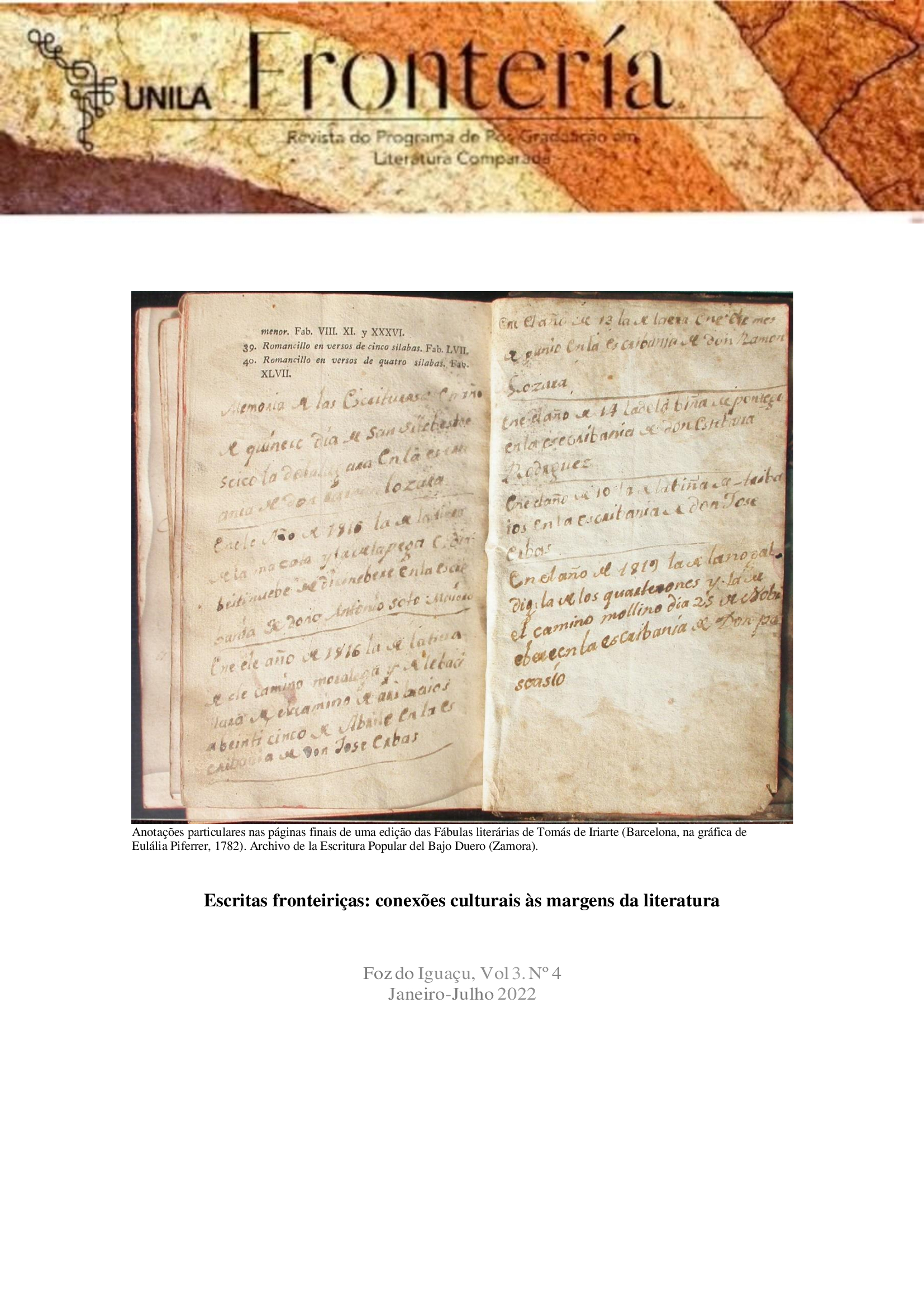Quevedo returning
Keywords:
QUEVEDO, BARROQUE, CONRMPORARY, DEATH AND LOVEAbstract
In this work I present notes elaborated from the poetry of Quevedo intertwined with my experiences. Through a narrative entangled with the Baroque resonates a close, familiar voice that is immediately linked to our ways of existing and feeling reality, making the Spanish poet a "contemporary". Our time is a present where diverse historical times are juxtaposed, I show that among the multiple underground aspects that nourish that temporal complexity, Quevedo’s texts (and not only of him), have been able to articulate themselves with the experiments of symbolism, surrealist poetry and the colloquialisms of the avant-garde. Likewise, the presence and echoes of Quevedo in Spanish and American poetry deepen the passage of time, the brevity of life and the joys and misadventures of love that are attracted to the great thematic nucleus, which illuminates and defines the remaining nuclei: the consciousness of death.
Downloads
References
ALONSO, Dámaso. Poesía española. Ensayos de métodos y límites estilísticos Madrid: Gredos, 1966, p. 495-580.
BAJTIN, Mijail. La cultura popular en la Edad Media y el Renacimiento. Madrid: Alianza Universidad. 1990.
BAÑOS SALDAÑA; José Ángel. Fue, será y es. La consolidación de Quevedo como clásico en la literatura española contemporánea. Revista de Estudios Filológicos 33, 2017. https://digitum.um.es/digitum/bitstream/10201/53987/1/Fue%20sera%20y%20es.pdf
COHEN, Jean. El lenguaje de la poesía. Teoría de la poeticidad. Madrid: Gredos.
Cuesta Abad, José M. y Jiménez Hefferman, Julián (2005) Teorías Literarias del siglo XX. Madrid: Akal, 1982.
GÓMEZ REDONDO, Fernando. Francisco de Quevedo. Antología poética comentada. Madrid: EDAF, 2004.
LAMBORGHINI, Leónidas. El genio de nuestra raza. Las reescrituras. Buenos Aires. Mansalva, 2017.
LLOPESA, Ricardo. Poesías Picarescas: Poesías satíricas inéditas (Amaranta). Madrid: Visor, 2014.
MUTIS, Ana María. Encuentros con el barroco: Francisco de Quevedo en dos poemas de Octavio Paz. HPR 5(2), 2006, pp. 32-49. Disponible en: https://journals.tdl.org/hpr/index.php/hpr/issue/view/18. Acceso en: 10 de agosto de 2022.
NERUDA, Pablo. Tercera residencia. Buenos Aires: Losada,1947.
NERUDA, Pablo. (1955) Viaje al corazón de Quevedo. Santiago de Chile: Nascimento.
QUEVEDO, Francisco de. Amor me ocupa el seso y los sentidos. Disponible en: http://www.loa.org.ar/espacioDetalle.aspx?ID=6c4a930a-87ec-4cac-9ffe-6f13b11b15a5 Acceso en: 10 de agosto de 2022.
_________________________ Musa VI Tália. Disponible en: http://culturafm.cmais.com.br/radiometropolis/lavra/francisco-de-quevedo-musa-vi-talia Acceso en 10 de agosto de 2022.
_________________________ En los claustros del alma la herida. Disponible en:
https://www.loa.org.ar/espacioDetalle.aspx?ID=db3de538-90c6-424b-a1e8-791916d442a7 Acceso en 10 de agosto de 2022.
_________________________ Antología poética. Disponible en: https://www.cervantesvirtual.com/obra-visor/antologia-poetica--39/html/ffa6b3fe-82b1-11df-acc7-002185ce6064_2.html. Acceso en 10 de agosto de 2022.
_________________________ Poesía Varia. En: James O. Crosby (Ed.). Madrid: Cátedra, 1985.
Vallejo, César. Poemas Humanos. España, aparta de mí ese cáliz. Madrid: Castalia, 1987. Disponible en: https://fundacionbbva.pe/wp-content/uploads/2016/04/libro_000040.pdf. Acceso en 10 de agosto de 2022.
Downloads
Published
How to Cite
Issue
Section
License
O envio dos trabalhos implica a cessão imediata e sem ônus dos direitos de publicação para a revista. O autor é integralmente responsável pelo conteúdo do artigo e continua a deter todos os direitos autorais para publicações posteriores do mesmo, devendo, se possível, fazer constar a referência à primeira publicação na revista. Esta não se compromete a devolver as contribuições recebidas. Destaca-se, ainda, que a revista é filiada ao sistema CreativeCommons, atribuição CC-BY (https://creativecommons.org/licenses/by/4.0/).




